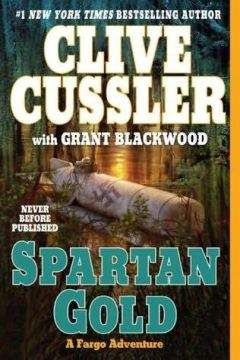“This is it?” Remi asked, eyes narrowed.
Sam checked the map. “Yep, this is it. Selma swears it’s the best charter place on the island.”
“If she says so.”
“Are you really going to bring that thing?” she asked, nodding to the towel-draped object lying on the floor between Sam’s feet.
After hanging up with Rube, Sam had gone to the villa and recounted the conversation to Remi, who listened carefully and asked no questions.
“I don’t want to see you get hurt,” she said finally, taking his hands in hers.
“And I don’t want to see you get hurt. It’d be the end of my world.”
“Then let’s not get hurt. Like you said, we’ll just stay one step ahead of them. And if things get too rough—”
“We’ll call in the good guys and go home.”
“Sure we will,” she replied.
Before coming to the airstrip, after leaving the hotel they’d first followed Rube’s address to a shoe-repair shop in downtown Nassau, where they found that the owner and Rube’s contact, Guido, was expecting them.
“Rubin wasn’t sure you would come,” Guido said in slightly Italian-accented English. “He said you were both very stubborn.”
“Did he now?”
“Yes, oh, yes.”
Guido walked to the front door, flipped over the Out to Lunch sign, then led them into the back room and down a set of stone steps into the basement, which was lit by a single hanging lightbulb. Lying on a bench amid shoes in various states of disrepair was a snub-nosed .38-caliber revolver.
“You both have handled guns, yes?”
“Yes,” Sam replied, answering for both of them.
In fact, Remi was a damned good marksman and had no fear of handling guns, but tried to avoid them if at all possible.
“Good,” Guido answered. “No serial numbers on the gun. Untraceable. You may throw it away when you are done.” He wrapped the gun in a towel along with a box of fifty bullets, then handed it to Sam. “One favor, if you don’t mind?”
“Name it,” Sam said.
“Don’t kill anyone.”
Sam smiled. “That’s the last thing in the world we want to do. How much do we owe you?”
“No, please, nothing. A friend of Rubin’s is a friend of mine.”
Sam now asked, “You want me to leave it?”
“No, I guess not. Better safe than sorry.”
They got out, collected their backpacks from the trunk, then went into the Quonset hut. A black man in his late sixties sat behind the counter on a lawn chair, a cigar jutting from his mouth.
“Well, hello there,” he said, rising to his feet. “I am Sampson, owner, operator, chief bottle-washer.” He spoke perfect Oxford English.
Sam introduced them, then said, “Not from around these parts, I take it?”
“Born in London. Came here ten years ago to live the good life. So, you’re going to Rum Cay?”
“Right.”
“Business or pleasure?”
“Both,” Remi said. “Bird watching . . . photography. You know.”
Sam handed over his pilot’s license and filled out the required forms. Sampson looked over the forms, then nodded. “Overnight?”
“Probably.”
“You’ve booked a hotel there?”
Sam shook his head. “We’re roughing it. You should have gotten a delivery yesterday—tent, potable water, camping gear. . . .” Guided by one of her dozens of mental checklists, Selma had arranged a full load of gear for their trek, from the absolute necessities to the “what-ifs.”
Sampson was nodding. “I did. It’s already loaded.” He pulled a clipboard off a nail on the wall, jotted a note, then returned it. “I’ve got you in a Bonanza G36, fueled and checked.”
“Pontoons?”
“As requested. Head over to the hangar and Charlie will send you on your way.”
They turned and headed for the door. Sampson called, “What kind of birds you hoping to spot?”
They turned back.
Sam shrugged and smiled. “Whatever is native to the island.”
CHAPTER 14
RUM CAY, BAHAMAS
Comprising as the island did an area of less than thirty square miles, finding a hidden base on Rum Cay might at first glance appear a fairly straightforward task to uninitiated adventurers, but Sam and Remi had been down similar roads before and knew the coastline, uneven as it was with hundreds of coves and inlets, was in reality at least six times the island’s gross circumference.
Originally known as Mamana by the local Lucayan Indians, the island was renamed Santa Maria de la Concepción by Christopher Columbus, finally gaining its modern name when Spanish explorers found a lone cask of rum washed up on one of its white sand beaches.
The island’s only village of note, Port Nelson, lay on the island’s northwest coast surrounded by groves of coconut trees. With a population that, according to the 1990 census, was somewhere between fifty and seventy souls—most of whom lived in Port Nelson—Rum Cay’s primary, if anemic, industry was tourism, followed by pineapple, salt, and sisal, all of which have waxed and waned over the decades. Other settlements, long since deserted and overgrown, bore exotic monikers like Black Rock and Gin Hill. Formidable reefs, coral canyons, and plunging seabeds encircle the island, making it a favored destination for pirates of old—or so said the brochure Remi had picked up in Nassau.
“There’s even a famous wreck,” she said as Sam banked the Bonanza to the right, following the contour of the island.
However unlikely they were to spot their target from the air, both thought it prudent to at least circumnavigate the island to get a better feel for what lay ahead.
“Blackbeard?” Sam asked. “Captain Kidd?”
“Neither. The HMS Conqueror, Britain’s first propeller-driven warship. Sank in 1861 in about thirty feet of water in a staghorn gully near Sumner Point Reef.”
“Sounds like it may be worth a return trip here.”
Rum Cay offered a few luxury resorts and even more beach cottage rentals. Judging by the azure waters, lush rolling hills, and relative seclusion, it struck Sam as the perfect get-away-from-it-all spot.
“There’s the airstrip,” Remi said, pointing out the window.
The 4,500-foot paved runway sat a couple miles from Port Nelson, a truncated white T amid a patch of forest that seemed determined to reclaim it. Sam could see antlike workers at the tarmac’s edge, hacking at the foliage with machetes. Just east of the runway they could see Salt Lake, and a few miles north of that, Lake George.
Though Sam had no fear of using the airstrip, they had asked Selma to ensure whatever aircraft they rented was equipped with pontoons. Exploring the island by car would have taken weeks at least and required miles of cross-country bushwhacking. With the pontoons, they could hop around the island’s shoreline, exploring interesting spots as they came across them.
Sam descended to two thousand feet, contacted Port Nelson Control, which verified their flight plan and permission, then banked around the northeast headland and turned south along the coast. As the least-inhabited part of the island, he and Remi thought it the best place to start their search. As the western half of the island was well explored and well populated—at least by Rum Cay standards—any discovery of the secret base would have been noted by now. Selma hadn’t come across any such reports, so Sam and Remi took this as a good sign. Providing the secret base wasn’t simply the concoction of some senile German Kriegsmarine.
“That looks like it’d make a good base of operations,” Sam said, nodding through the windshield at a three-quarter moon cove with sugar-white beaches. The nearest structure, what looked like an abandoned plantation house, sat six miles inland.
Sam banked again, bleeding off speed and altitude as he went until they were two hundred feet off the waves, then lined up the Bonanza’s nose on the beach. He did a quick visual check to make sure he hadn’t missed seeing a reef, then eased the craft down, flaring at the last moment and letting the pontoons kiss the surface. He throttled back to idle, letting the plane’s momentum carry them forward. The pontoons hissed as they contacted the shoal sand and they came to a gentle stop six feet onto dry land.
“Beautiful landing, Mr. Lindbergh,” Remi said, unbuckling her seat belt.
“I like to think all my landings are beautiful.”
“Of course they are, dear. Except for that time in Peru . . .”
“Never mind.”
Remi climbed out onto the beach and Sam handed down their backpacks and the duffel bags containing their camping gear. Sam’s satellite phone trilled and he answered.
“Mr. Fargo, it’s Selma.”
“Good timing. We just touched down. Hold on.” Sam called Remi over and put the phone on speaker. “First things first: You’re buttoned up?”
After learning the pedigrees of Bondaruk, Arkhipov, and Kholkov from Rube, Sam had ordered Selma, Pete, and Wendy to move into the Goldfish Point house and set the alarm system, which Sam had long ago tweaked to satisfy his engineer’s mind; the system, he knew, would give a CIA black-bag team a run for its money. And, as luck would have it, the San Diego Commissioner of Police and Sam’s thrice-weekly judo partner lived a half mile from them. Squad cars were on quick-response alert for their neighborhood.
“Safe and sound,” Selma replied.
“How goes the battle?”
“We’re getting there. Should have some interesting reading for you when you get home. First, some good news: I figured out what the bug is on the bottom of the bottle. It’s from Napoleon’s family coat of arms. On the right side of the coat is what looks like a bee. Though there’s some debate about this among historians, most believe it isn’t a bee at all, but a golden cicada—or at least that’s what it was in the beginning. The symbol was first discovered in 1653 in the tomb of Childeric I, the first king of the Merovingian dynasty. It represents immortality and resurrection.”
“Immortality and resurrection,” Remi repeated. “A tad conceited—but then again we are talking about Napoleon.”
“Let me get this straight,” Sam said. “Napoleon’s signature icon is a grasshopper?”
“Close, but not exactly,” Selma said. “Different branch of the family tree. The cicada is more closely related to leafhoppers and spittlebugs.”
Sam laughed. “Ah, yes, the royal spittlebug.”
“Between the cicada and Henri Archambault’s mark, there’s no doubt the bottle’s from the Lost Cellar.”
“Good work,” Sam said. “What else?”
“I also finished dissecting the translation of Manfred Boehm’s diary. There’s a line in there about ‘the Goat’s Head’ . . . ?”
“I remember,” Remi replied. Both she and Sam had assumed it had been a Rum Cay tavern Boehm and his shipmates had visited.
“Well, I massaged the translation a bit, using both High and Low German, and I think the Goat’s Head is a landmark of some kind—maybe a navigation aid. Problem is, I did some digging and I couldn’t find anything about a Goat’s Head related to Rum Cay—or any of the other islands, for that matter.”
“We’ll keep our eyes peeled,” Sam replied. “If you’re right, it’s likely a rock formation of some kind.”
“Agreed. And last, I owe you guys an apology.”
“For?”
“An error.”
“Say it isn’t so.”
Selma rarely made mistakes and those that she did were almost always minor. Even so, she was a strict taskmaster—more so with herself than anyone else.
“I was slightly off in translating the abstract from the German naval archives. Wolfgang Müller wasn’t the captain of the Lothringen . He was a passenger, just like Boehm. Another sub captain, in fact. He was assigned to the midget sub UM-77.”
“So Boehm and Müller and their subs are aboard the Lothringen, which sails across the Atlantic, puts in at Rum Cay for resupply and refit—”
“That’s the word the sailor—Froch—used in his blog, correct?”
“Correct. Refit.”
“Then a week later, Boehm’s boat, the UM-34 ends up in the Pocomoke River and the Lothringen is sunk. Which begs the question, where is Müller’s sub, the UM-77?”
“According to the German archives, it’s listed as lost. According to U.S. Navy archives, they found nothing aboard the Lothringen when it was captured.”
Remi replied, “Which means the UM-77 probably went down on its own mission—something similar to Boehm’s mission, I’m betting.”
“I agree,” Sam said, “but there’s also a third possibility.”
“Which is?”
“She’s still here. It’s the word ‘refit’ that got my attention. The Lothringen was what, one hundred fifty feet long?”
“About that,” Selma replied.
“To refit a ship that big would have taken a fair-sized facility—something big enough that it would have been discovered by now. I’m beginning to think the refitting they mentioned was for the UM-34 and the UM-77, and if we’re right about their mission being top secret, they sure as hell weren’t going to do that in the open—not with U.S. Navy PBY spotter planes flying out of Puerto Rico.”
“Which means . . . ?” Remi asked.
“Which means we may have some spelunking in our future,” Sam replied.
They finished unloading the Bonanza, then staked her tie-downs deep into the sand and started looking for a campsite. Nightfall was only a few hours away. They’d get a fresh start in the morning.
“We’ve got a competitor,” Remi said, pointing down the beach.
Sam shaded his eyes with his palm and squinted. “Well, that’s not something you see every day.”
A quarter mile away, nestled against the tree line along the cove’s northern arm, was what looked for all the world like a Hollywood version of a tiki hut, complete with a thatched conical roof and plank walls. Hanging between the hut’s two front posts was a hammock; in it was a figure, one foot dangling over the edge, rocking the hammock back and forth. Without looking up the figure raised a hand in greeting and called, “Ahoy.”
Sam and Remi walked the remaining distance. In front of the hut was a fire pit surrounded by wave-worn logs for seating. “Welcome,” the man said.
He looked distinguished if not a bit weathered, with white hair, a well-trimmed goatee, and twinkling blue eyes.
“Don’t mean to intrude,” Sam said.
“Nonsense. Wanderers are always welcome, and you two certainly look the part. Have a seat.”





